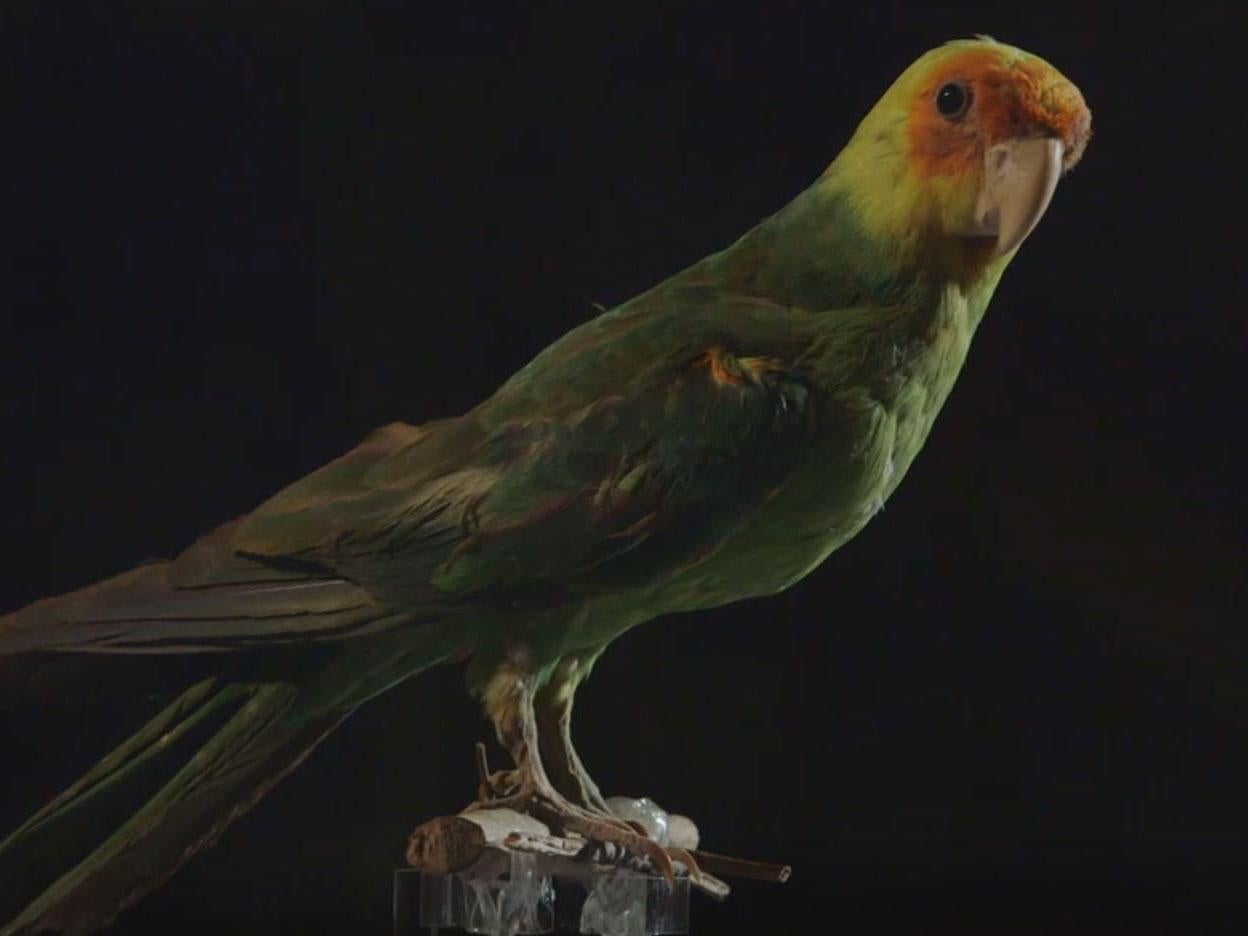Humans are ‘sole culprits’ in extinction of US’s only native parrot, study shows
‘Our results suggest [the Carolina parakeet’s] extinction was an abrupt process and thus likely solely attributable to human causes,’ said the study

Your support helps us to tell the story
From reproductive rights to climate change to Big Tech, The Independent is on the ground when the story is developing. Whether it's investigating the financials of Elon Musk's pro-Trump PAC or producing our latest documentary, 'The A Word', which shines a light on the American women fighting for reproductive rights, we know how important it is to parse out the facts from the messaging.
At such a critical moment in US history, we need reporters on the ground. Your donation allows us to keep sending journalists to speak to both sides of the story.
The Independent is trusted by Americans across the entire political spectrum. And unlike many other quality news outlets, we choose not to lock Americans out of our reporting and analysis with paywalls. We believe quality journalism should be available to everyone, paid for by those who can afford it.
Your support makes all the difference.The Carolina parakeet, which was the only native neotropical parrot in the US, met the demise of its species because of human interference, researchers have found.
A group of scientists sequenced the parrot’s genome from a preserved specimen held in a private collection and cross-referenced it with the genome of its still-living relative, the South American sun parakeet.
They first looked for signs of inbreeding, which is an indicator of a species going through a slow decline.
Instead, researchers found the Carolina parakeet genome to be more genetically diverse in comparison to many bird species alive today.
Carles Lalueza-Fox, from the Institute of Evolutionary Biology in Pompeu Fabra University and co-author of the study, told National Geographic this indicates the birds experienced an “abrupt extinction process that left no marks in the parakeet genome”.
Ms Lalueza-Fox also said the study ruled out disease as a main contributor to the bird’s demise as there was no evidence of it in the genetic analysis.
“Our results suggest [the Carolina parakeet’s] extinction was an abrupt process and thus likely solely attributable to human causes,” the study said.
The parrot’s genetic sequence indicated the population was doing well and could be found in New England in the east to Colorado in the west in “large and noisy flocks”.
When European settlers began expanding their territories and carrying out deforestation, hunting and trapping activites, the parrot population declined abruptly.
The study added: “The bird’s final extinction was likely accelerated by collectors and trappers when it became evident that it was extremely rare.”
The last captive parrot died in Cincinatti Zoo on 21 February 1918, in the same cage that the last passenger pigeon had died in in 1914.
The study has been published by the journal Current Biology.
Join our commenting forum
Join thought-provoking conversations, follow other Independent readers and see their replies
Comments